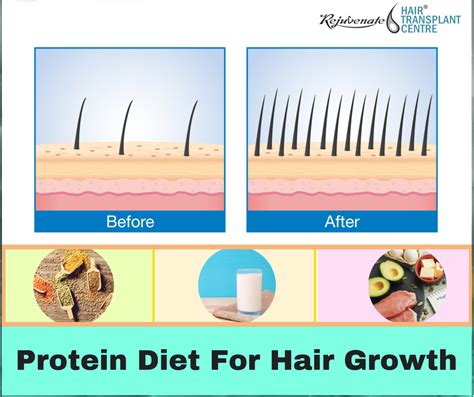Protein is a vital component of healthy hair, accounting for nearly 90% of its structure. When hair becomes damaged, it often loses protein, resulting in weakness, breakage, and dullness. Protein treatments can help to repair and strengthen hair by replenishing lost protein, restoring its health and vitality.

This comprehensive guide will explore the different types of protein treatments for hair, their benefits, how to use them, and who they are most suitable for.
Types of Protein Treatments
There are two main types of protein treatments for hair:
1. Reconstructive Treatments
Reconstructive treatments are designed to repair severely damaged hair. They contain highly concentrated proteins that penetrate deep into the hair shaft, rebuilding its structure and strengthening it from within. Reconstructive treatments are typically used on hair that has been chemically processed, bleached, or heat-styled.
2. Maintenance Treatments
Maintenance treatments are less concentrated than reconstructive treatments and are suitable for all hair types. They help to maintain hair’s strength and prevent future damage. Maintenance treatments can be used as a regular part of your hair care routine to keep your hair healthy and strong.
Benefits of Protein Treatments
Protein treatments offer a wide range of benefits for hair, including:
- Repair and strengthen damaged hair
- Reduce breakage and split ends
- Increase hair’s elasticity and flexibility
- Improve hair’s texture and shine
- Promote hair growth
- Protect hair from further damage
How to Use Protein Treatments
Protein treatments can be applied at home or in a salon. Home-use protein treatments are typically available in the form of shampoos, conditioners, masks, and leave-in treatments. Salon treatments are more concentrated and may require professional application.
To use a protein treatment at home, follow these steps:
- Wash your hair with a clarifying shampoo to remove any dirt or product buildup.
- Apply the protein treatment according to the manufacturer’s instructions.
- Leave the treatment on your hair for the recommended time.
- Rinse your hair thoroughly with lukewarm water.
- Style your hair as usual.
Who Should Use Protein Treatments?
Protein treatments are suitable for all hair types, but they are particularly beneficial for hair that is:
- Damaged
- Dry
- Brittle
- Prone to breakage
- Chemically processed
- Bleached
- Heat-styled
Frequency of Use
The frequency of use of protein treatments depends on the condition of your hair and the type of treatment you are using.
- Reconstructive treatments should be used every few weeks or months, depending on the severity of the damage.
- Maintenance treatments can be used weekly or bi-weekly to maintain hair’s health and prevent future damage.
Tips and Tricks
- Use protein treatments only when your hair is dry or damaged. Overuse of protein treatments can lead to brittle hair.
- Choose the right protein treatment for your hair type and needs.
- Follow the manufacturer’s instructions carefully.
- Don’t leave protein treatments on your hair for longer than the recommended time.
- Use a deep conditioner after using a protein treatment to help restore moisture.
- Avoid using protein treatments with sulfates, parabens, or phthalates. These ingredients can strip hair of its natural oils and cause damage.
FAQs
1. What causes hair damage?
Hair damage can be caused by a variety of factors, including:
- Chemical processing (such as bleaching, coloring, or perming)
- Heat styling
- Exposure to UV radiation
- Environmental pollution
- Hormonal changes
- Aging
2. How do I know if my hair is protein deficient?
Some signs that your hair may be protein deficient include:
- Dryness
- Brittleness
- Elasticized
- Split ends
- Breakage
- Dullness
3. How often should I use protein treatments?
The frequency of use of protein treatments depends on the condition of your hair and the type of treatment you are using. In general, reconstructive treatments should be used every few weeks or months, while maintenance treatments can be used weekly or bi-weekly.
4. Can I use protein treatments on all hair types?
Protein treatments are suitable for all hair types, but they are particularly beneficial for hair that is damaged, dry, brittle, or prone to breakage.
Conclusion
Protein treatments are a powerful tool for repairing and strengthening damaged hair. By replenishing lost protein, protein treatments can help to restore hair’s health, vitality, and shine. Whether you choose a reconstructive treatment or a maintenance treatment, there is a protein treatment that is right for your hair type and needs.
Tables
Table 1: Types of Protein Treatments for Hair
| Type of Treatment | Benefits |
|---|---|
| Reconstructive Treatments | Repair severely damaged hair |
| Maintenance Treatments | Maintain hair’s strength and prevent future damage |
Table 2: Benefits of Protein Treatments for Hair
| Benefit | Description |
|---|---|
| Repair and strengthen damaged hair | Replenish lost protein to rebuild hair’s structure |
| Reduce breakage and split ends | Increase hair’s elasticity and flexibility |
| Improve hair’s texture and shine | Smooth and condition hair |
| Promote hair growth | Provide nutrients that stimulate hair follicles |
| Protect hair from further damage | Create a protective barrier around hair |
Table 3: Who Should Use Protein Treatments?
| Hair Type | Benefits |
|---|---|
| Damaged | Repair and strengthen |
| Dry | Moisturize and condition |
| Brittle | Increase elasticity and flexibility |
| Prone to breakage | Reduce breakage and split ends |
| Chemically processed | Repair and protect |
| Bleached | Repair and strengthen |
| Heat-styled | Repair and protect |
Table 4: Frequency of Use of Protein Treatments
| Type of Treatment | Frequency |
|---|---|
| Reconstructive Treatments | Every few weeks or months |
| Maintenance Treatments | Weekly or bi-weekly |
